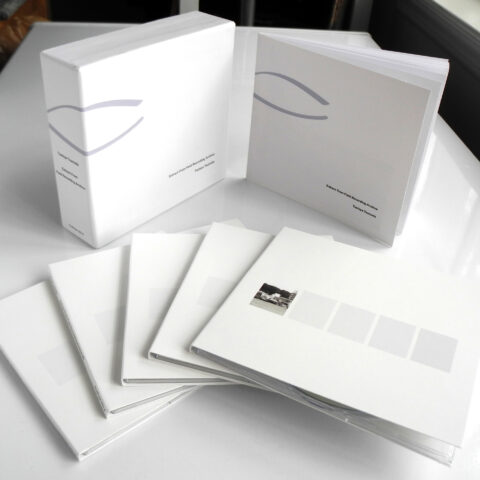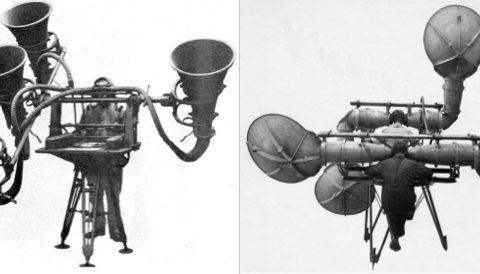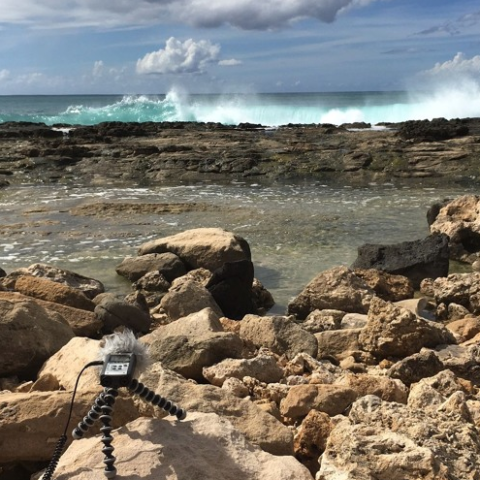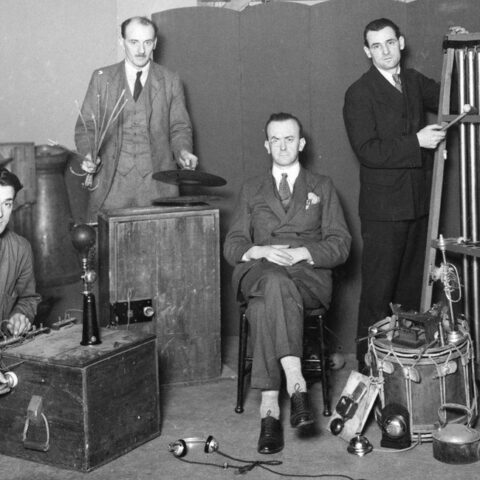“Portage” is Sonic Terrain editor Nathan Moody’s occasional series about the trials and tribulations of carrying audio equipment into the field. Keep an eye open for future installments featuring different styles and techniques of safely getting your gear into the great outdoors.
Introduction
Welcome to the first installment of Portage.
Many recordists struggle with lugging their equipment into the field. Microphones are sensitive, field recorders aren’t waterproof, and the environment is filled with annoyances and hazards that conspire to keep our field recording sessions from being successful: Rain, dust, sand, tree branches, even loud tourists.
If it’s a short stroll from the car, sure, put it all in your Pelican cases. If you’ve got a big budget, well, it becomes your assistant’s problem. But what if your location is significantly distant: Perhaps many minutes, perhaps hours, maybe even days? Then comfortably and securely carrying all that bulky equipment becomes a challenge.
Every recordist will eventually find a portage/carrying system that works for them, but for those who still struggle with this aspect of field recording, we’ll first look at the possibility of using bags and cases intended for the military for audio equipment!
Licensed to Carry
Even as a tree-huggin’ pacifist, I’ve always liked the design and aesthetics of industrial and military equipment. Tough, hopelessly overbuilt, and highly modular, it’s great fun to check out military surplus stores and outfitters, especially in the realm of bags. It also turns out that there are firms that make new, non-surplus bags with similar attributes. Because they are intended for the harshest environments, they can be great choices for toting audio equipment.

One of the more interesting aspect of military bags and cases is a standardized webbing system called MOLLE. Pronounced Molly, it’s an acronym that stands for MOdular Lightweight Load-carrying Equipment. It is comprised of 1-inch (2.5cm) webbing in rows that are 1 inch apart, and that are sewn into the underlying fabric every 1.5 inches (3.8cm). This lets MOLLE-compatible bags and accessories to be “mated” together. Attachment bands hold MOLLE bags and pouches together, and are sold in several variations (under the names of Natick Snap, Malice clips, TacTies, and more).
The implications for audio equipment are many, but this means that if you build a collection of MOLLE-compatible pouches around one or more MOLLE-compatible bags, you can store all your gear in the appropriate bag or pouch and then strap together only what you need for a certain outing, which can be pretty handy.
In fact, there are other MOLLE accessories, like GrimLoc carabiners (pictured at left) and more, that make carrying audio cables especially handy and fast.
Mission One: Packing a Handheld Recorder
Let’s start easy: The last three years has seen an explosion in affordable, high-quality, handheld field recorders. Some are small enough to fit in a pocket. Others are just a hair bigger, and of course they all need their share of accessories, from recording media to headphones to batteries. There are many ways to carry these things, but military bags do tend to have more than the normal number of pockets, zippers, nooks, and crannies…and, of course, they’re tough as nails and MOLLE compatible.

An American company named Maxpedition has a huge variety of bags and pouches that are all built from super-tough ballistic nylon, and treated to be highly water-resistant (meaning fog, mist, and light showers are fine, but prolonged deluges are not). Their rather descriptively-named 7x5x2 Pouch is the perfect size, for example, to hold a Sony PCM-D50 recorder with its USB cable, a set of earbuds (for emergency or backup monitoring), and eight batteries. This can then easily be thrown inside any bag, carried on a belt, or strapped to another MOLLE-compatible bag. Personally, I like having all relevant accessories in the same place as the recorder, especially when a plum recording opportunity arises. The last thing a recordist wants to do is search a larger bag for spare batteries!
Mission Two: Stealth Recording
Realistically, any bag can be used to do stealth recording (any recording where you don’t want casual onlookers to know that you’re recording sound). But one bag comes to mind as being very well-suited to this purpose: The Maxpedition Lunada.

This small sling-style bag is the perfect size to carry an iPad, a large notebook, pens, and all the usual things someone might take around town or to the office. However, it is also a perfect size to fit a Sound Devices 700 series recorder. It’s not intended for this purpose, so it’s not easy to monitor levels live with it, but the bag’s small size and ability to hold a few more items and accessories makes it a great urban stealth recording bag. (I use the recorder vertically in the bag, since when you sling it around to your chest, the bag is horizontally oriented towards you anyway.)
Mission Three: Packing a Microphone Windscreen
Unless you were one of the few that bought a DPA WindPac collapsible windscreen before they were discontinued, chances are your mics are in large, bulky windscreens that are hard to protect and carry for long distances. (You do use a windscreen, right? Don’t make me come over there!)

The best bag I’ve found for this is actually intended to carry the antenna for a military satellite radio. Made by Maratac and sold by CountyComm, this sling bag is a squared-off tube covered in MOLLE webbing, two long zippered pockets on each side, and a dual-zipper main compartment. This compartment is against your back, which improves its resistance to rain, dust, and sand while it’s being worn. They fit Rycote windscreens up to six inches in diameter, and they also perfectly fit the thinner but much longer Røde Blimp and many Rycote shotgun-specific windscreens. The picture above also shows a telescoping mic boom stand in the bag, and they are also long enough to fit lightweight light or mic stands under 19″ in length. Of course, these things can also be strapped to the outside courtesy of the MOLLE webbing (as was the 25′ stereo cable shown in the first photo in this article). The bag, like the others described in this article, resists moisture well, even when placed upon damp ground. (Not big enough? CountyComm sells an even longer one, although its width is the same.)
So…what’s not to like?
Aesthetics aside – military-style gear isn’t everyone’s style – there are some other aspects to consider before deciding if this kind of portage system is for you. First of all, the bombproof construction of these bags makes some of them rather heavy, a consideration for long-distance trekking to one’s recording location. Second, while likely to get some jealous looks locally, they do look like they carry serious equipment, so some designs might not be appropriate for keeping the lowest profile possible.
There are as many non-mil-spec alternatives as there are yet more bags in the larger universe of military-spec equipment that could be useful to field recordists. So many, in fact, that the Portage series will continue until they’re all explored! More information on ultra-light, backpacking-compatible, and international options will be discussed in future installments.
Have any mil-spec bags that work well for you? Have any misadventures or saved-your-butt stories around such bulletproof packs? Let’s hear it in the comments.





